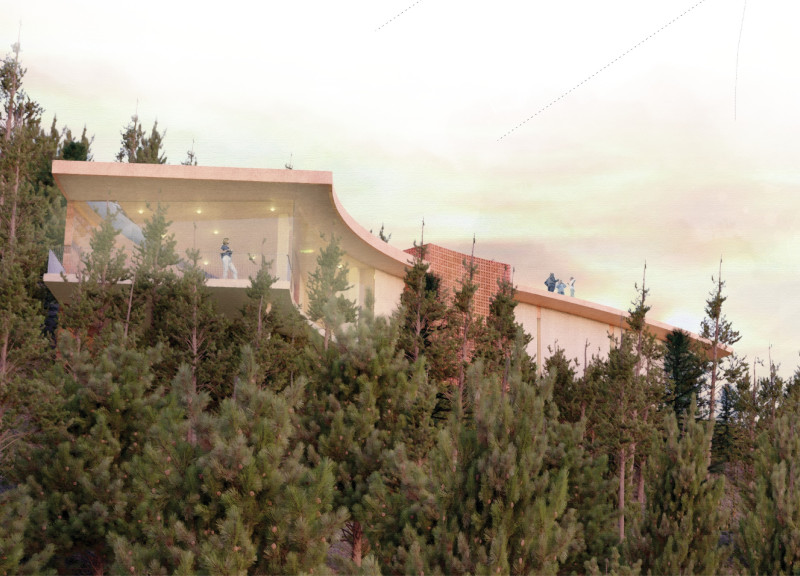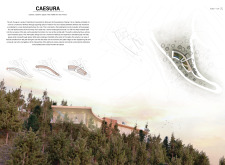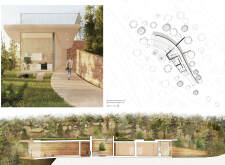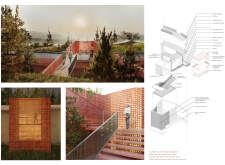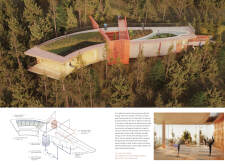5 key facts about this project
CAESURA is an architectural design that connects the practice of yoga with the surrounding landscape. Located in a unique area where winding river roads meet a narrow terrain that leads to a cliff, the Shala reflects the principles of stillness and movement central to yoga. This relationship informs the overall design concept, creating a place that encourages both reflection and physical activity.
Conceptual Framework
At its core, the project explores the balance between stillness and movement, similar to how a rock can disrupt the flow of a river. This metaphor is evident in the building's form and circulation, allowing individuals to traverse pathways that inspire both motion and quiet moments. The design aims to foster balance in movement while providing space for meditation and contemplation.
Site Integration
CAESURA is thoughtfully positioned to follow the site's natural contours. The central circulation path, designed to mimic the flow of a river, guides visitors through various experiences. This strong connection to the landscape helps the Shala exist in harmony with its surroundings, making it feel like part of the environment rather than something imposed upon it.
Materiality and Sustainability
The materials used in the project show a commitment to the local context, enhancing the sense of unity throughout the design. Wood panel flooring runs across the interior and roof, offering a tactile experience that connects with the natural world. A rammed earth wall reinforces the space, echoing the landscape's shapes and providing stability. The terracotta-colored masonry contrasts with pathways, linking the Shala to nearby architecture. Sustainability is also a focus, with systems for collecting rainwater and harnessing solar energy, reflecting a responsibility toward the environment.
At the entry to the studio, a vertical, open transition space creates a boundary that blends the inside and outside. This thoughtful design allows users to feel the connection between the built environment and the natural world. The interplay of light and space enhances the atmosphere, inviting individuals to engage fully with their practice and surroundings.


